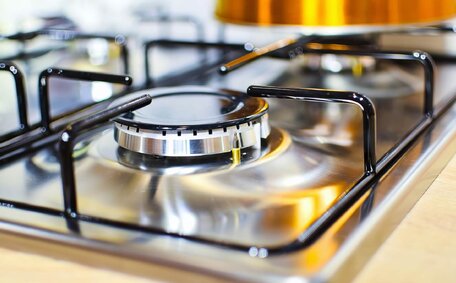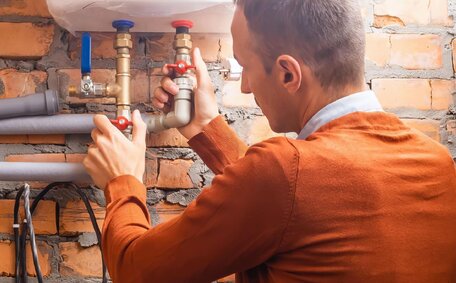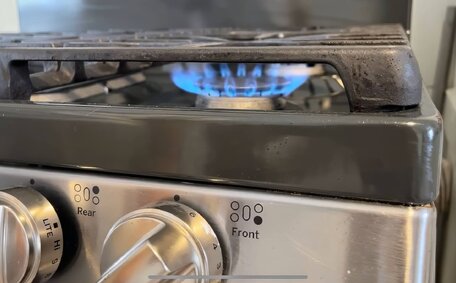Introduction to Gas Pipeline Lifespan
Knowing the typical lifespan of gas pipelines is critical for safety, efficiency, and budget planning. At Mascot Plumbing, we are often asked how long gas pipelines last before needing repair or replacement. With over 20 years serving the Mascot area, we have extensive expertise regarding pipeline materials, maintenance practises, and factors impacting lifespan.
The lifespan of a gas pipeline would rely on key elements like the construction and materials used, ongoing maintenance, and practices sensitive to corrosion, stresses, and compatibility with emerging energy sources such as hydrogen blending. While some pipelines installed decades ago remain fully functional today, others require repairs, upgrades or replacement much sooner.
In this article, we leverage our real-world knowledge as licenced gas plumbers to provide insight into typical gas pipeline lifespans. By understanding lifespan considerations, you can make informed maintenance decisions that balance safety, longevity, and cost.
We also share best practises you can adopt to extend the functional lifespan of your own pipelines through proper care and diligence.
Typical Lifespan of Gas Pipelines
Gas pipelines are typically designed and installed projecting that a pipeline would have an expected lifespan of around 50 years. However, the actual functional lifespan can vary quite substantially based on several key factors.
Older pipelines constructed from materials like unprotected steel are more prone to corrosion and deterioration over time. However, modern pipelines made from non-corrosive materials like polyethylene plastic or properly coated and cathodically protected steel can last considerably longer.
Ongoing maintenance and repair practises also play a major role. Pipelines that are regularly inspected and proactively maintained to address emerging issues early on tend to have greater longevity. Conversely, lack of proper maintenance accelerates ageing and the risk of leaks or ruptures.
External stresses like soil movement, flooding, vibrations from construction can also impact lifespan. Pipeline routes need to be carefully assessed to minimise environmental risks during installation. Ongoing monitoring helps detect new threats so preventative action can be taken.
The transition towards blending natural gas with hydrogen and renewable gases also influences lifespan considerations, as older pipeline materials may not be fully compatible. New installations should use hydrogen-ready components to ensure safe functionality over a 50+ year lifespan.
While most pipelines eventually require attention, prudent design, choice of materials, maintenance, and monitoring ensures that a pipeline would safely meet or surpass the approximate 50-year benchmark lifespan.
Pipeline Materials and Their Impact on Lifespan
The materials used to construct gas pipelines directly impact their longevity and maintenance requirements. Older pipelines were typically made from unprotected steel or iron, which corrodes over time, resulting in leaks and ruptures. However, modern pipelines utilise advanced materials that better withstand corrosion and damage.
Polyethylene plastic has become a common modern pipeline material. Polyethylene plastic has become a common modern pipeline material. Polyethylene pipelines can last well beyond 50 years with proper installation and maintenance.
Steel pipelines can also achieve long lifespans of 50+ years today thanks to sophisticated coatings that prevent rust and cathodic protection systems to slow corrosion.
Another key advancement is that seamless pipes are now preferred over welded ones as a pipeline would benefit from enhanced strength and reduced cracking risks. Seamless steel pipes are extruded hot, making them resistant to cracking with improved strength. Copper pipes offer durability too but can be vulnerable to pinhole leaks from hydrogen impurities attacking the copper.
When installed appropriately with superior modern materials, a pipeline would continue to convey natural gas securely well over 50 years. If your pipelines were installed decades ago, considering a material upgrade during replacement maximises longevity and reduces ongoing maintenance costs.
Key Factors that Shorten Pipeline Lifespan
There are several key external factors that contribute to shortened lifespans for gas pipelines:
- Physical damage - Nearby construction work, flooding, tree roots, soil shifts, vehicle impact or other physical disturbances can dent, crack, twist or rupture pipelines. Preventative pipeline relocations and depth adjustments help minimise potential damage risks.
- Corrosion - both internal and external corrosion remains a leading cause of pipeline leaks and ruptures. Lack of protective coatings/linings, microbial corrosion, stray electrical currents and chemical interactions accelerate corrosion and material breakdown.
- High-pressure operation - Excessive gas pressure strains pipeline walls and joints, increasing fatigue cracking and blowout risk. Careful pressure regulation and surge protection helps prevent pressure spikes.
- Inadequate maintenance - Failure to regularly inspect, test, repair and upgrade pipelines means problems go undetected and lifespan expectations are not met. Proactive maintenance is essential.
- Regulatory changes - New codes, standards and gas blending mandates may require pipelines to be upgraded or replaced to achieve compliance. For example, old steel pipes have reduced capacity for hydrogen gas transportation.
By understanding and mitigating these lifespan reducing factors through protective measures, regular maintenance and considered upgrades, gas pipelines can continue operating safety for decades past initial lifespan estimates.
Monitoring and Maintenance Best Practices
Ongoing monitoring and timely maintenance is crucial for preserving pipeline integrity and prolonging functional lifespan. At Mascot Plumbing, we recommend home and business owners in Mascot, Sydney adopt a proactive maintenance approach, rather than waiting for issues to arise.
Annual visual inspections are critical as they scrutinise potential early warning signals, such as corrosion damage, indicative of whether a pipeline would soon need reparative work. We also advise pressure testing pipelines every 5 years to detect weakness requiring intervention. If tests reveal declining pressure capacity, pipe wall integrity may be compromised.
We can assist with leak surveys using advanced gas detection technology to pinpoint invisible leaks. Speedy repairs prevent further damage. For pipelines nearing end-of-life, pipe relining is a trenchless method to restore strength and corrosion resistance.
By harnessing our vast experience after inspecting numerous properties in Mascot, we assist clients to finetune maintenance schedules and make strategised decisions for repairs, upgrades or replacements, ensuring that a pipeline would function securely for more than half a century.
Adopting these monitoring and maintenance best practises, coupled with using modern hydrogen-ready materials, allows gas pipelines to continue serving Mascot homes and businesses well beyond initial lifespan expectations.
When to Replace vs. Abandon Aging Pipelines
There comes a point when an ageing gas pipeline requires replacement or abandonment to remain safely operational. As licenced gas plumbers, we can assess when pipelines are no longer fit for continued use based on factors like pipe condition, repair history, and changing regulations.
Replacement is necessary once multiple leak repairs have occurred along a section of pipeline or tests reveal significant drops in pressure capacity indicating wall failure risk. Upgrade options include pipe relining or full trench replacement with modern, hydrogen-ready polyethylene or steel pipes for enhanced longevity.
However, if a pipeline is so severely degraded that integrity cannot be restored, abandonment is the only safe recourse. We first disconnect supply valves and purge all residual gas. Pipe sections are then capped at both ends as per regulations before backfilling the trench.
Abandoned pipes remain the property holder’s responsibility. Whileunused pipelines generally pose low risk, we recommend complete removal to prevent confusion and liability issues down the track. Our team handles the entire replacement or removal process safely from permits to reinstatement.
As trusted local plumbers, Mascot Plumbing prioritises safety and compliance when advising on pipeline replacement or abandonment. Don’t hesitate to contact us for professional assessments of your ageing gas pipelines.
Future Considerations and Regulations
The future of gas pipelines will be shaped by evolving energy policies and regulations as the market gradually transitions towards renewable energy sources. Older pipelines not designed for hydrogen blending may require upgrades or replacement earlier than their expected lifespan to align with decarbonisation roadmaps.
Many countries have pledged to achieve net zero emissions by 2050. This will likely see codes revised mandating that all new pipeline infrastructure be hydrogen-ready. Many countries have pledged to achieve net zero emissions by 2050. However, pipelines installed 30+ years ago were not built to safely handle these gas mixtures.
To align with emissions targets, ageing pipelines that cannot be refurbished for hydrogen may have reduced lifespans, evidencing why a new pipeline would be a future-proof investment. Accelerated replacements using polyethylene or steel pipes with compatible linings will ensure networks can transport blended fuels safely. We expect more stringent inspection and reporting requirements for older pipelines too.
As trusted local plumbers, Mascot Plumbing stays well-informed regarding changing regulations. We proactively advise clients on pipeline upgrades and lifecycle considerations reflecting policy shifts. Contact us anytime to discuss the future-readiness of your gas pipelines.






